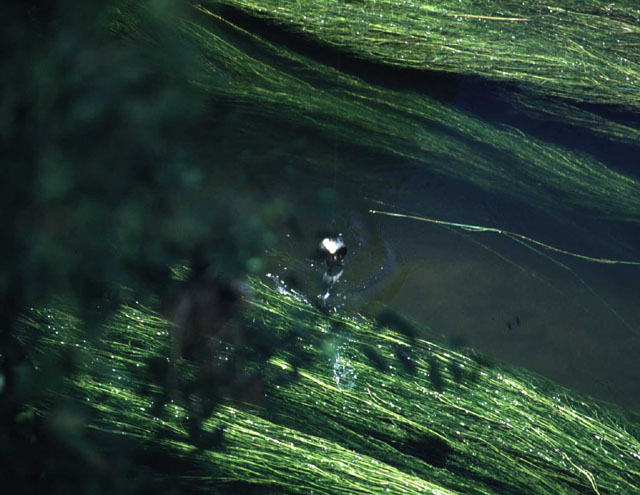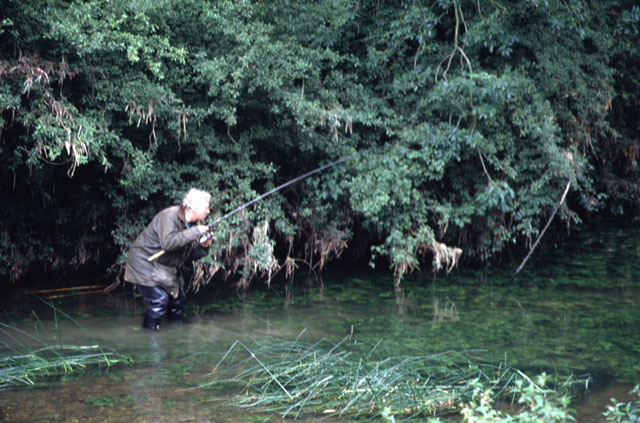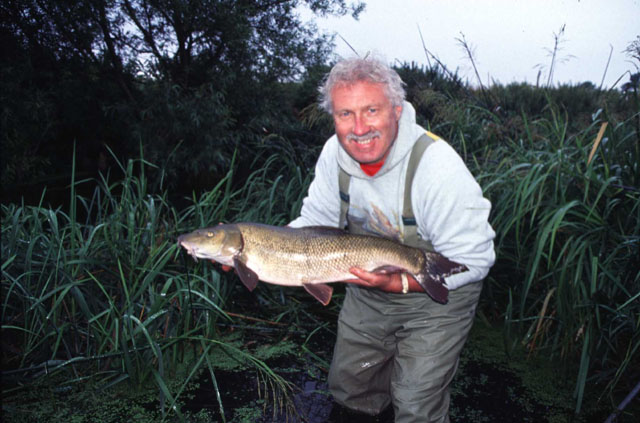Prebaiting For Summer Barbel
By Tony Miles
By Tony Miles
Having hopefully located some barbel the time has come to prepare the swims, undoubtedly the most vital task to get right if you are to enjoy consistent success with the species.
Where barbel are concerned, it is far better to fish for one hour at the correct time in a properly prepared swim than it is to flog away for hours and spook every fish in the vicinity. So resist the temptation, having located a barbel, to immediately drop a bait in front of it, in the expectation of an instant bite. If it is a big fish it is likely to spook, and a big, scared barbel, takes a long time to settle back into its normal routine.

My swim preparation technique allows the barbel to slowly adapt themselves to a preoccupied feeding pattern, the only disturbance being by topping up the free feed occasionally. The longer the barbel are allowed to feed unmolested, the greater will their preoccupation become. The bigger barbel respond best to this approach. Once they have confidence, being bigger and greedier, they spend longer on the bait than smaller fish. When we have a situation where the biggest barbel are the first to return to a swim after a bait topping up, then these fish are most likely to be first to a hook bait and the swim preparation is complete.
So how does the behaviour of the barbel change as they slowly gain confidence? When they first discover food in a swim they are ultra cautious, and although each fish will linger over the bait for a little while, they invariably vacate the swim after a few minutes. It is natural caution.
After an absence of from a few minutes to as much as half an hour, the fish will drift back into the area, take a few more mouthfuls and go again. This procedure can go on for some time, but the longer you watch, the more you will notice that their stay in the swim starts to get longer and longer, and the interval between each visit shorter.
Eventually, there arrives a point where the barbel are virtually resident in the swim, provided that there is an adequate food supply. Natural caution has now been submerged under their preoccupation for the loose feed, and I have often observed barbel remaining in the swim while the feed is gently topped up by bait dropper.
Let us now consider the prebaiting procedure in detail. Although the premier attractant for barbel is undoubtedly still hempseed, specially where the fish have not received much attention from anglers, I now prefer a 50/50 mix of hemp and that magical mixture from Hinders known as Partiblend, which is a mixture of many oil bearing particles. During the initial baiting, I will generally deposit ten droppers of feed at exactly one rod length out from the bank. Observation of the fish activity is much easier under the near bank, and further feed can then be introduced very accurately.
A vitally important point is that the exact position in a swim that the barbel will feed can be dictated by you, which will be where the food is concentrated. At exactly one rod length from the near bank there will be nothing hit and miss about the placing of the hook bait, even in pitch darkness.
During initial baiting, the dropper will also contain hook bait samples. Particle baits are the choice in daylight in all but very coloured water. Generally, large baits in clear water have a tremendously unsettling effect on barbel, none more so than luncheon meat. The right time to use large meaty baits for barbel is when their sense of smell is used in its location and not their sense of sight, and that will obviously be in coloured water or at night.
Even if I intend to fish a large meat bait at night, after preparing the swims in daylight, I never include any of these large baits in the prebaiting process. When a meat-baited hook is introduced to a prepared swim after dark, it will be the first such bait the barbel has seen.
There is one notable exception to my large bait comments with current barbel fishing. Those anglers with the time, patience and dedication to prebait with special paste baits or boilies of the types I discussed in recent features can wean the fish on to large offerings in daylight. This obviously has taken the preoccupation theory to its ultimate, that of the barbel wanting to get at the bait and giving no thought to other considerations.

This observation process is made much easier if you have included in your loose feed highly visible particles such as sweetcorn or light coloured paste samples if you're into special baits. Their rate of disappearance indicates how fast the feed is being consumed, and how frequently you should top it up. For the technique to work properly, there must be adequate feed in the swims at all times, otherwise the barbel will abandon them.
The rate of topping up is trial and error, but I have found a good average to be six droppers of hemp containing whatever particles I am introducing about every two hours. One of the better particles is sweetcorn, but I have found that it is a mistake to overdo the baiting. Very heavy baiting with corn not only can spook barbel, but it also attracts hordes of chub. It is almost impossible, however, to overdo the baiting with maggots and casters, both supreme barbel baits, the only restriction on their use obviously being cost and attention of nuisance fish, particularly the barbel anglers nightmare, bootlace eels. Several hours preparation of a barbel swim with hemp and maggots or hemp and casters can be absolutely devastating, but, of course, is expensive.
In summer, with rivers low and clear and barbel needing a long time to feed confidently, I will often pay four prebaiting visits to each swim before contemplating fishing, and this entails some eight hours of baiting without actually wetting a line. I said it requires self restraint!

The obvious objection to this is that many anglers have limited fishing time available, and eight hours spent baiting, walking and watching is time when they could actually be trying to catch fish. I have some sympathy with this but would stress that ten minutes fishing in a properly prepared swim will yield greater rewards than ten hours with a more haphazard approach.
In my own summer fishing, the prebaiting technique described is used throughout the daylight hours, with no attempt being made to fish at all until the onset of dusk. Even when night fishing is not allowed, so quickly do barbel respond to a hook bait after they have been fed undisturbed all day that several fish can be caught in quick succession in just one hours fishing time at the end of the day. However, there is no doubt that, when night fishing is available, not introducing a hook bait into a prepared swim until well into darkness is the most devastating way of fishing for barbel of all.
Once that hookbait has at last been introduced, the excitement really builds, and the techniques employed will be the subject of the final article in this series.
Many thanks to Tony Miles for allowing Barbel Fishing World the use of the above article.
